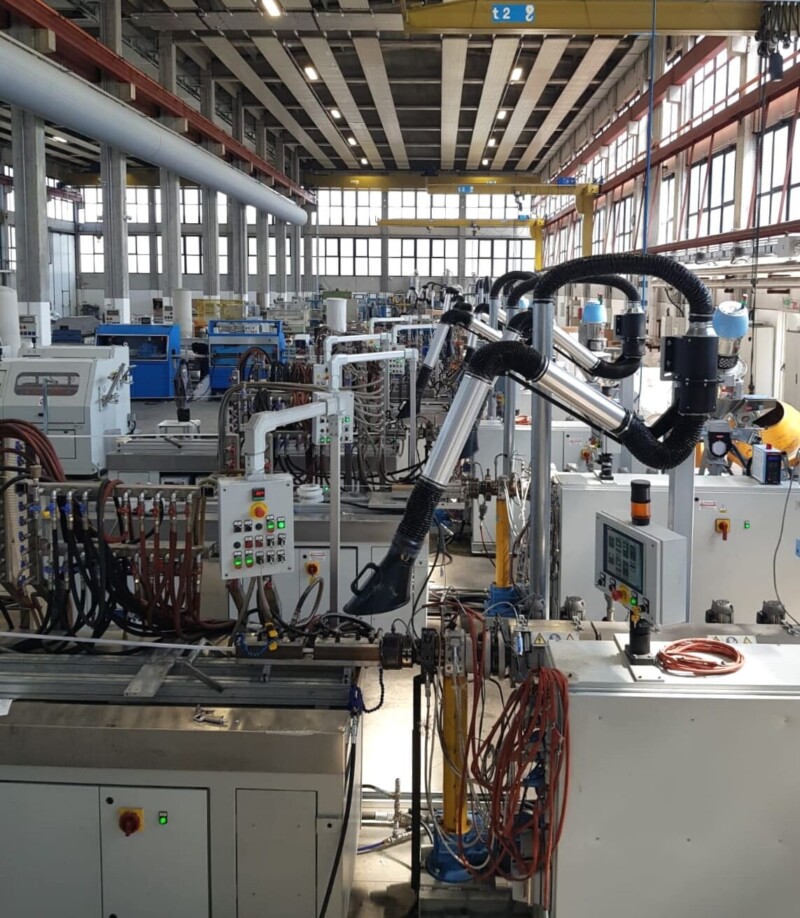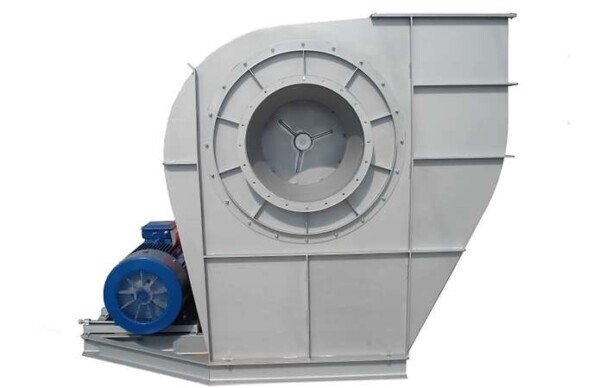Air pollution control equipment design in industrial applications
Focus on the expedients needed to plan and create industrial aspiration systems
In the previous articles we talked about air pollutants and industrial technologies to reduce them, but do you know how an air pollution control system is planned?
In this article we will examine this case, introducing in a simple and clear way the main aspects you need to pay attention to in order to design aspiration systems.
Air pollution control systems design: planning and execution
Firstly, in order to design a system it is important to know the client’s problem and identify all the parts you need to solve it. As a matter of fact, a plant for the treatment of air pollutants is not only made of pollutants reduction technology (filters, purifiers, wet scrubbers, oxidisers and the like), but it also includes a whole range of elements conveniently adapted to collect, convey and treat the pollutants.
Therefore, the design phase has a basic role because it enables to make tailored air pollution control equipment that are able to return the emissions within the values provided for by law. Having a suitable abatement plant allows the companies to avoid sanctions by the inspection bodies, to considerably reduce the energy consumption and above all, to safeguard the health of operators by creating a healthy work environment. This last point is strictly connected to the collection phase; below you can read the details.
Air systems design: extraction and local suction
The local collection has a basic role in the reduction of the concentration of pollutants because it allows the harmful substances to be extracted directly from the source, therefore avoiding any dispersion in the work environment.
The extraction is made through specific suction arms or hoods properly adapted to the layout and volumes of the equipment. During the design of these components, you need to consider the following important aspects:
- ergonomics and operators’ comfort;
- security of the components to be used;
- usability and suitability
The hoods can be made of different materials, layouts and size. Their choice is made by considering different factors, such as:
- scope of pollutant (corrosive, explosive, etc.) and its own characteristics (weight, granulating, type, quantity…). These information also influence the speed of material transport, that is a basic information for the system design;
- flow temperature;
- available space and type of equipment to be used

While planning a collection system, another fundamental aspect to be considered is the contemporaneity factor. With this term, we mean the quantity of machines in operation at the same time and from which the pollutants need to be aspired. This information has a basic role in order to identify the flow rate of the plant and correctly adapt the components of the treatment system (fans, scrubbers…). If you do not correctly carry out this stage, these elements risk to be inadequate or oversized, therefore causing a cost increase (more consumption and/or costs to adapt the plant).
Ductwork design and calculations
After having been collected by the machineries, the pollutants are conveyed in the pipelines which carry them from the collection point to the treatment one (abatement technology) through ad hoc path. But how is this part adapted? Firstly, in order to define the positioning of the central piping and conduit, the following elements must be considered: the available spaces where the abatement system have to be located, the characteristics of the work environment and the distribution of the machineries.
Given that the pressure drop (stated in Pascal or mmH2O) increases as the diameter of the pipe decreases, in order to adapt the system it is necessary to identify the suction nozzle with a minor diameter and more distant from the abatement system. The total loss of the system is calculated by adding up the loss of all the set of components included in the path which starts from this nozzle until the emission in the atmosphere.
This information, with the total flow rate of the system, allows the most suitable fan to be chosen.
The steps above described are basic to correctly adapt an aspiration system. Without a careful planning, some problem in the ability to aspire of the system can be produced with any consequences of stockpile of material in the piping and increase in the pressure drop with a consequent increase of energetic consumption.
Instead, as regards the construction materials of the piping and their components (curves, flanges, collars…), exactly as the hoods, can be produced with different materials (stainless steel, weathering steel, galvanized sheet…), according to the type of pollutants and their characteristics.
Industrial ventilation design and air pollution control technology
In the previous paragraph the fans have been mentioned, but do you know what their function is and how they are chosen?
We have already talked about this case in our blog’s articles “Industrial ventilation and fans, physical principles” and “Industrial ventilation systems – technical choices”, therefore herein we will focus on the fan’s function and its positioning in the aspiration and abatement system.
Generally, the industrial fans have the important function to give motion to the airflow and they adapt to the plant’s characteristics. Each of them is characterized by a series of identifying elements (characteristic curves, efficiency, frequency of rotation, noisiness…) which make it suitable to specific operation conditions.
Therefore, the fan’s choice should be cautious and should consider different elements, such as:
- plant’s flow rate and pressure drop;
- flow temperature;
- pollutants;
- noisiness and fan’s efficiency
The fans can be located after or before the abatement technology.

In the first case, the scrubber is located in negative pressure and in the second case it is located in positive pressure. The choice on the positioning of the fan should consider the pollutants to be treated and, therefore, the abatement technology to be used. Generally speaking, we can say that usually the fan is located after the scrubber in order to avoid that dust crosses it; in this way it is possible to use backward curved impellers with high efficiency. However, some technologies guarantee higher efficiency when are in high pressure. For example, activated carbon purifiers allow the VOCs in airflows usually without dusts to be reduced. Therefore, in order to choose the right fan it is essential to know the features of the different technologies and the pollutants to be treated.
The type of pollutants represents a basic factor even for the choice of the abatement technology. As we have already analysed in the blog’s articles and in our website, there are different types of abatement technologies. As mentioned, the choice of the right one should consider the pollutant to be treated (dusts, VOCs, fumes, oil mists, smells…) and its features. For in-depth analysis on this aspect, we invite you to visit our product pages.
Air pollution control system: lessons to learn and mistakes to avoid
In this article we have focused on the air pollution control equipment design and its own problem, in order to let you know the importance of experience and professionalism of the companies in this sector.
Sometimes the clients tend to entrust the management of the plants creation to companies that propose them the lowest price, without considering the technical and qualitative aspect of the offer. Thus, they risk to purchase low functioning plants that can have problem through time and cause greater consumption and waste of money.
Therefore, it is essential for the clients to take advantage of experts’ assistance in the purchase and post-selling processes, guaranteeing support and professionalism. As a matter of fact, each modification or addition generated can have great impact on the operating of the plant and on the costs to be incurred. Thus, it is essential that the clients are supported by experts that know how to create the plant and how to perform corrective actions in case of modifications.
Thanks to its high experience in planning and in the production of industrial systems in various industries, to its dedicated attention to the client’s satisfaction and to its quality certification ISO 9001:2015, Tecnosida is the ideal partner for the creation of systems for pollutants treatment. All the internal procedures (from planning to post-selling including the production, installation and maintenance) follow the guidelines provided for by the quality system, allowing us to guarantee long-lasting first-rate quality results, in accordance with laws in force on environment protection.
Besides, the choice of professional plants allow you to reduce the maintenance costs to be incurred through time! Therefore, be wary of the companies that only offer the lowest price and rely on true experts of plants!